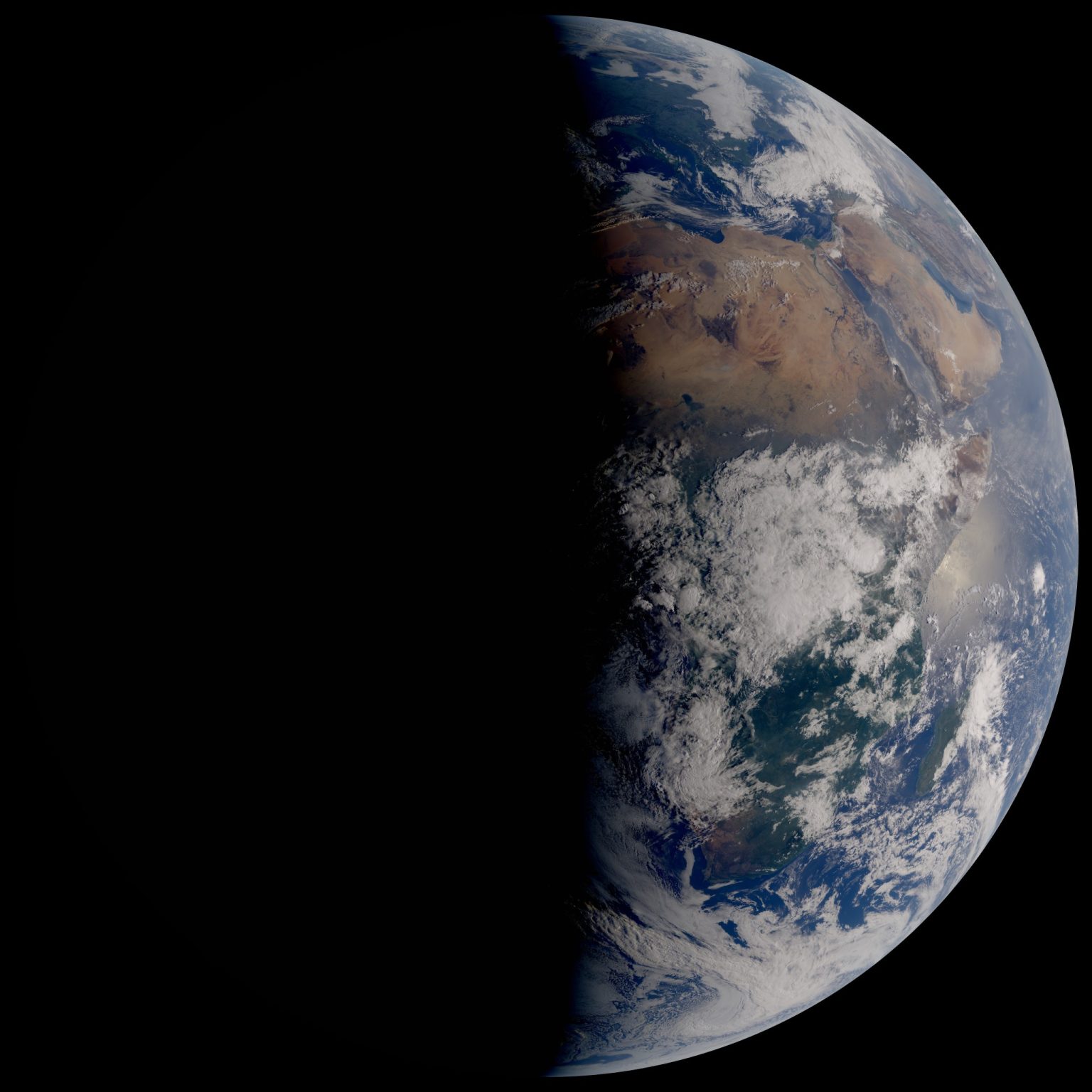The European Organization for Satellite Meteorology EUMETSAT published an image taken by the Meteosat-12 satellite on March 20. It demonstrates what the vernal equinox looks like from space.

Equinox is an astronomical phenomenon when the center of the Sun in its apparent motion along the ecliptic crosses the celestial equator. This moment marks the beginning of astronomical spring in one hemisphere of our planet (in this case the Northern hemisphere) and astronomical autumn in the other hemisphere (in this case the Southern hemisphere).
It is generally believed that during the equinoxes the length of day and night are the same, and the Sun rises exactly in the east and sets exactly in the west. But this is not entirely true. In fact, during the equinox, the day length is already slightly longer than the night, which is due to atmospheric refraction. Because of it, at most latitudes the Sun rises not exactly in the east and sets not exactly in the west. The only exception is the equator.
If you go outside the atmosphere and look at the Earth from space on the day of the equinox, you can see a beautiful geometric picture: the terminator line runs along the geographic poles of the Earth and is perpendicular to the Earth’s equator. It was captured in images taken by the Meteosat-12 satellite on the morning of March 20.
The equinox has another interesting feature that is of interest to amateur astrologers. During it, the magnetic field lines of the Earth and the Sun are temporarily aligned. This causes even relatively small geomagnetic storms to produce bright auroras that can be seen even at temperate latitudes. Because of this, March and September are traditionally considered the best months to observe them.


